Our Work
Oak Understory
Understory wildflower meadow in UROI Project area
What is the understory?
The understory is a small-scale haven for biodiversity which supports the larger whole. The term “understory” describes anything that grows beneath the “overstory” canopy of trees and tall shrubs, but these grasses and wildflowers can extend out into meadows and prairies, too. Conserving and restoring oak habitat means considering the entire plant community – from the mighty oak down to tiny ephemeral wildflowers hugging the ground.
Understory plants feed bees, butterflies, birds and a host of other wildlife. They store carbon from the air in underground root systems that also create the soil structure that some insects need for housing! Larger mammals – including humans – can eat seeds and tubers of understory plants like tarweed (Madia spp.), camas and biscuitroots (Lomatium spp.). Indigenous societies refer to these plants as First Foods.
Unfortunately, while larger plant species like oaks have persisted on the landscape through decades and centuries of resource extraction, understory plant communities have been severely altered by grazing, exclusion of fire and introduction of invasive, non-native species. Habitat restoration in oak savannas and woodlands of southwest Oregon and northern California will not be effective without addressing the understory.
Currently, habitats within the Upper Rogue Oak Initiative project area lack native understory plant diversity. Invasive grasses have overtaken large areas, outcompeting native grasses and wildflowers and covering over natural bare soil patches.
How can we restore the understory?
The first step toward understory restoration is careful scientific observation of the project area to learn what native and non-native understory species are present. That’s where The Understory Initiative comes in.
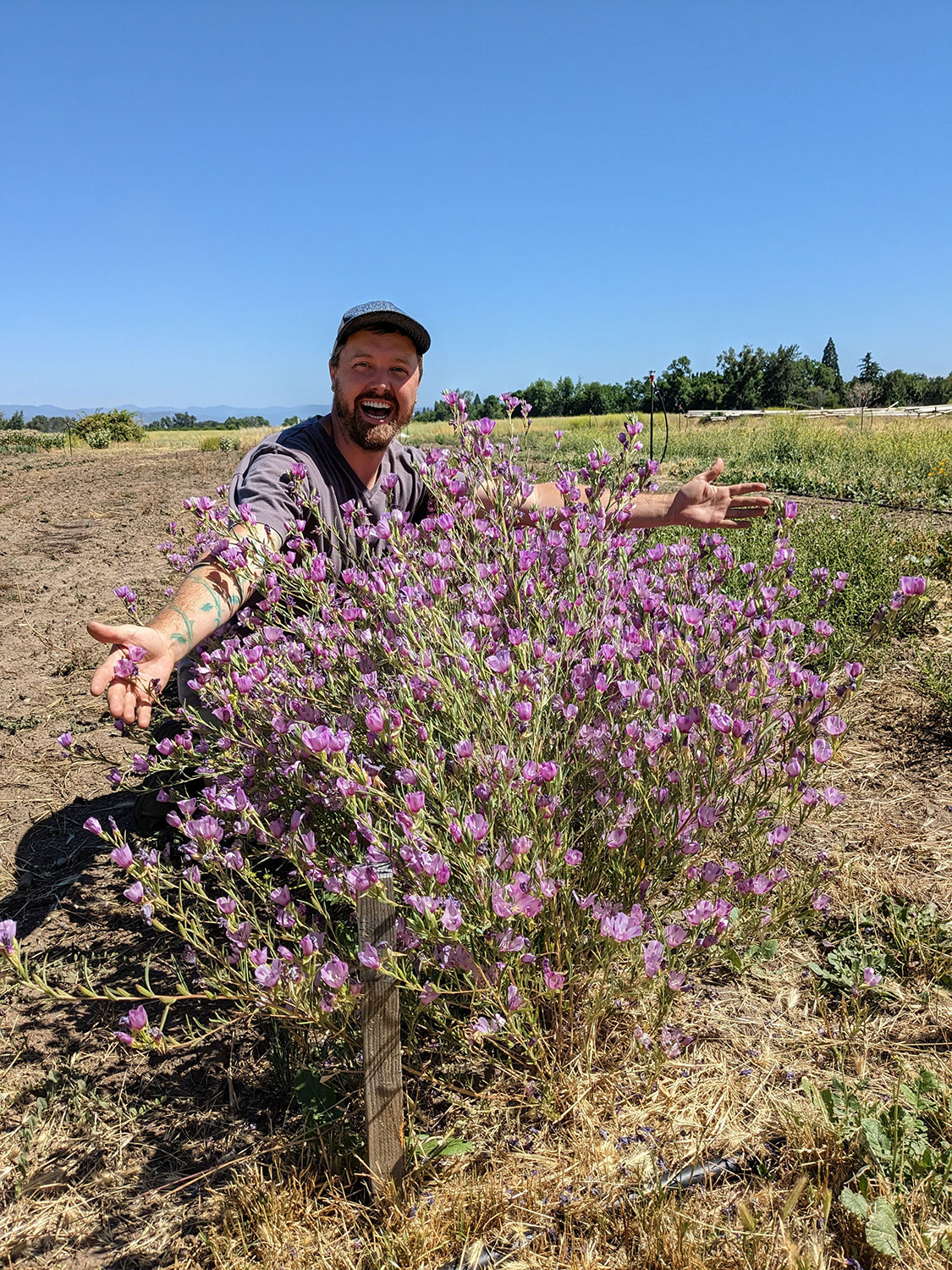
Since 2019, The Understory Initiative (TUI) has worked to restore understory habitat in the Rogue Basin with a focus on research, vegetation monitoring, native seed production, and on-the-ground restoration actions. As a Klamath Siskiyou Oak Network partner, TUI fills a vital role in ensuring that understory plants are part of the restoration planning process. For example, in the Upper Rogue Oak Initiative project area, TUI is collecting data about the understory plant community, managing native seeding efforts, and assisting in the control of invasive, non-native species, so that native understory plants and the dependent biodiversity can thrive post-restoration.
Seeds: Completing the Cycle of Ecological Restoration
Native understory plant seeds collected by The Understory Initiative in 2022 and 2023 have already been transferred to farmers who will grow them into mature plants. By harvesting seeds from farm-grown plants, we can quickly and economically increase the quantity of seed available without depleting the population and resilience of the original plants. Harvested seed will be sown in the project area after the preliminary restoration work of thinning and pile burning are completed.
Through this careful and collaborative process, we can begin re-creating pockets of diverse native habitat to support pollinators and other wildlife.
Get to Know Understory Plants in
KSON Project Areas
There are hundreds of plant species that comprise the understory of oak habitats in the UROI project area of the Klamath Siskiyous. Here are a few that are easy to recognize and also critical for ecological restoration work.
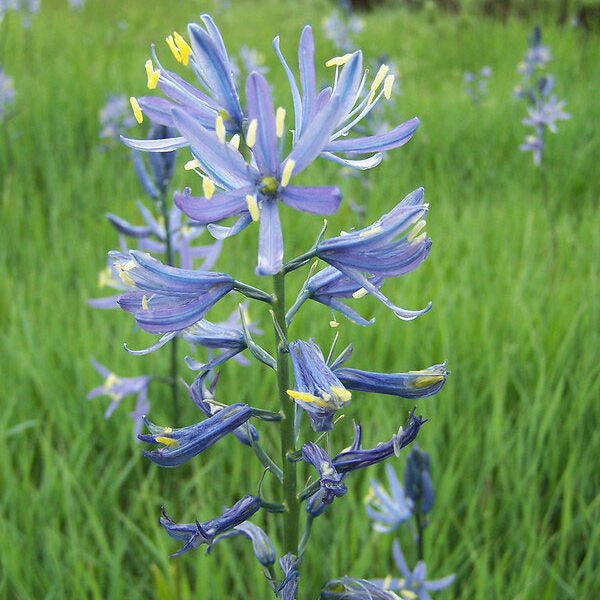
Camas
Camas (Camassia spp) is a beautiful lily that also happens to be edible! In fact, this plant served as a staple food for native peoples since time immemorial, and continues to be a culturally significant plant. Its large, starchy root and juicy stalk provide food for wildlife as well, while its gorgeous purple flowers support bumble bees, mason bees, hover flies, beetles and other pollinators in the early spring. Restoring camas is tricky due to its long life span; it can take years for a seed to form a bulb and produce a flower. However, camas bulbs with a few leaves but no flowers can persist for decades in grazed areas and often begin flowering again after grazing pressure is removed.
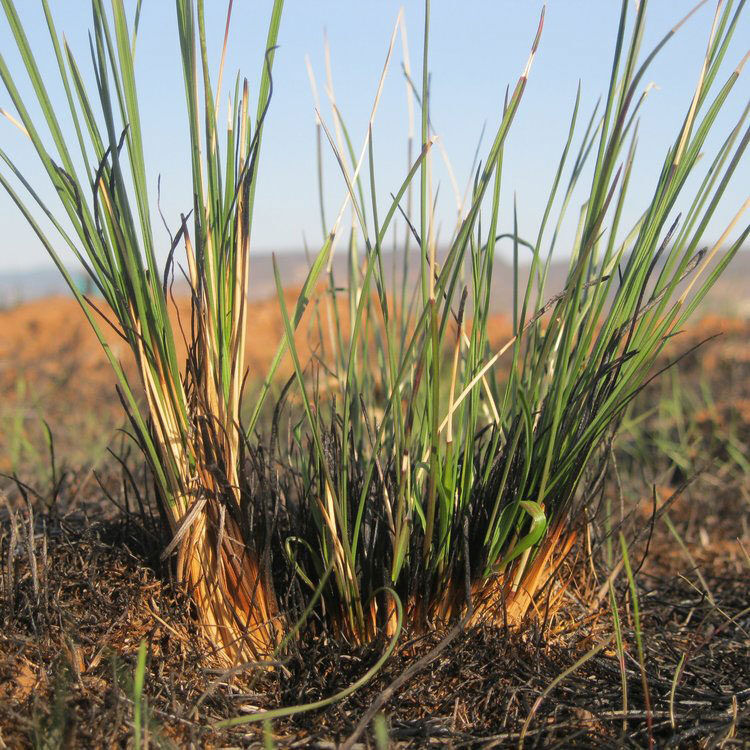
Lemmon’s Needlegrass
Lemmon’s needlegrass (Achnatherum lemmonii) is a perennial native bunchgrass often found in oak savannas. Its “bunches” can measure up to two feet across, with a massive root system that protects it from dry summer conditions. Its tall flower stalks produce seeds with long, needle-like awns which once dropped to the soil surface twist and straighten with changes in soil moisture, helping to drill the seed into the soil. Birds, small mammals and ants relish the nutritious seed. Deer and elk also browse on Lemmon’s needlegrass, while ground-nesting birds like the Western Meadowlark, as well as moths and butterflies, nest at the base, making this a key species for wildlife.
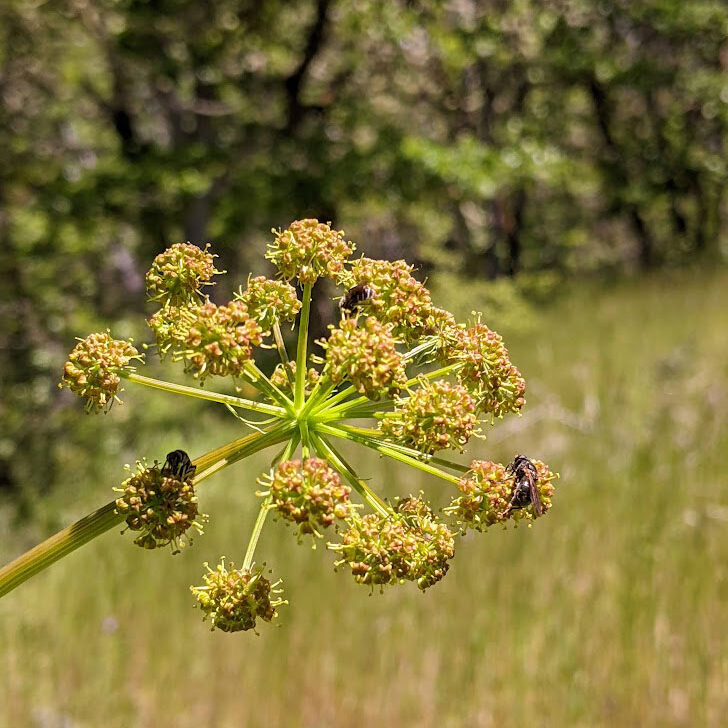
Wild Celery/Biscuitroots
Lomatium is the genus that includes wild celery and several species of biscuitroot, all with a characteristic yellow umbrella-shaped flower. These plants also produce a taproot that can become quite large, and many are edible. Usually, lomatiums are seen in the spring and early summer, and then their green, often ferny foliage dies back. However, many plants retain their distinctive striped seeds for the rest of summer and into the fall, providing yet another wildlife benefit. Lomatiums are host plants for swallowtail butterflies, solitary (mining) bees, moths and other pollinators. Due to their large taproots, lomatium are often highly resistant to drought and are one of the more resilient species used in habitat restoration in oak savannas.
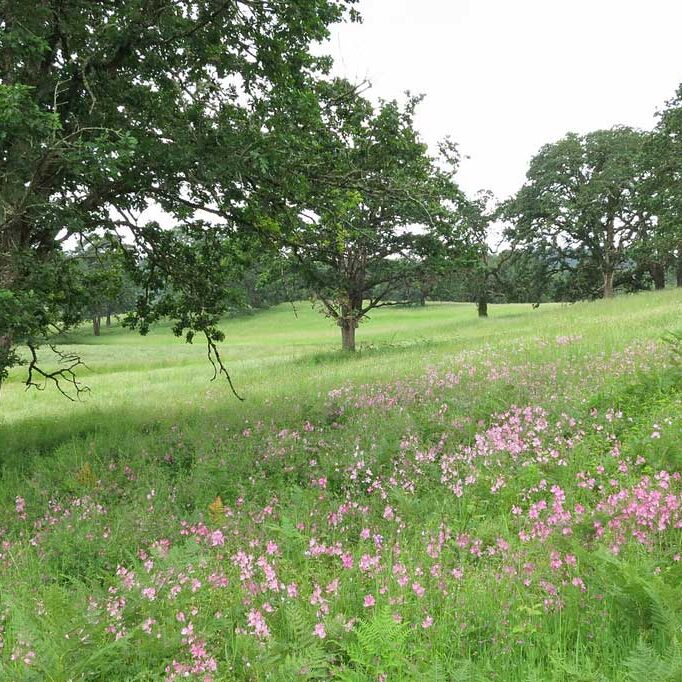
Seablush/Rosy Plectritis
Seablush (Plectritis congesta) is a small (but mighty!) wildflower that forms an early-spring sea of pink in oak savanna habitat. The flowers form round clusters at the end of each stem, and are loved by pollinators including checkerspot butterflies. Seablush takes advantage of early spring moisture, blooming quickly and drying out by June. It is an annual and a good seed producer, making it a key species for restoration as well.